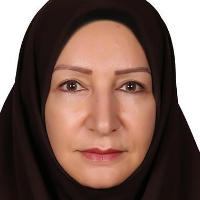Essential oil diversity of 21 populations from Iranian endemic species Nepeta kotschyi Boiss
Author(s):
Abstract:
The genus Nepeta is one of the largest genera of the Lamiaceae family, and Iran, particularly, is one of the main centers of origin of this genus. Nepetalactones and flavonoids were reported as major constituents of Nepeta species, and the main cause of their medicinal value and biological properties. There are lots of reports related to biological activities of secondary metabolites of genus Nepeta showing the importance of this genus. In this work, the essential oil (EO) diversity of 21 wild populations from Nepeta kotschyi Boiss., Iranian endemic species, was investigated. For removing the environmental effect, the seeds of populations were planted in one place. Plant aerial parts were harvested at full flowering stage, and after shade-drying, their EO was extracted by hydrodistillation method. EO was quantitatively and qualitatively analyzed by GC and GC/MS. After botanical study and EO analysis, it was revealed that the populations were from two different varieties. Two populations including buyer-ahmad1 and Buyer-Ahmad2, were from N. kotschyi var. kotschyi, and others were stood in N. kotschyi var. persica. Twenty-four components were characterized in the EO of N. kotschyi. The highest amount of EO yield (w/w) was obtained in populations of var. kotschyi (0.5-0.7%). Three main chemotypes were identified among populations of var. persica based on the main component(s) of EO, including a containing NepI (4aα,7α,7aα-nepetalactone), b containing NepII (4aα,7α,7aβ-nepetalactone) and cubenol, and c containing geranyl acetate and cubenol. Except of semirom and Taft5 which were stood in b-chemotype, and Taft4 which was placed in c-chemotype, other populations of var. persica, also populations of var. kotschyi, were stood in a-chemotype. In addition, based on the main component of EO, the populations of var. kotschyi were put in a-chemotype. In a-chemotype, the amount of NepI was obtained between %53.9 (Chelgard) and %84.8 (Buyer-Ahmad2), and NepII was measured between %1 (Taft1) and %13.7 (Chelgard). In b-chemotype, the amount of NepI was measured between %0.3 (Taft5) and %4.9 (Semirom), and NepII was obtained between %13.4 (Taft5) and 44.7% (Semirom). NepIII (4aα,7β,7aα-nepetalactone) (1.3-3.3%) was characterized only in the EO of var. Kotschyi populations.
Keywords:
Language:
Persian
Published:
Iranian Journal of Medical and Aromatic Plants, Volume:32 Issue: 2, 2016
Pages:
189 to 202
magiran.com/p1562135
دانلود و مطالعه متن این مقاله با یکی از روشهای زیر امکان پذیر است:
اشتراک شخصی
با عضویت و پرداخت آنلاین حق اشتراک یکساله به مبلغ 1,390,000ريال میتوانید 70 عنوان مطلب دانلود کنید!
اشتراک سازمانی
به کتابخانه دانشگاه یا محل کار خود پیشنهاد کنید تا اشتراک سازمانی این پایگاه را برای دسترسی نامحدود همه کاربران به متن مطالب تهیه نمایند!
توجه!
- حق عضویت دریافتی صرف حمایت از نشریات عضو و نگهداری، تکمیل و توسعه مگیران میشود.
- پرداخت حق اشتراک و دانلود مقالات اجازه بازنشر آن در سایر رسانههای چاپی و دیجیتال را به کاربر نمیدهد.
In order to view content subscription is required
Personal subscription
Subscribe magiran.com for 70 € euros via PayPal and download 70 articles during a year.
Organization subscription
Please contact us to subscribe your university or library for unlimited access!


